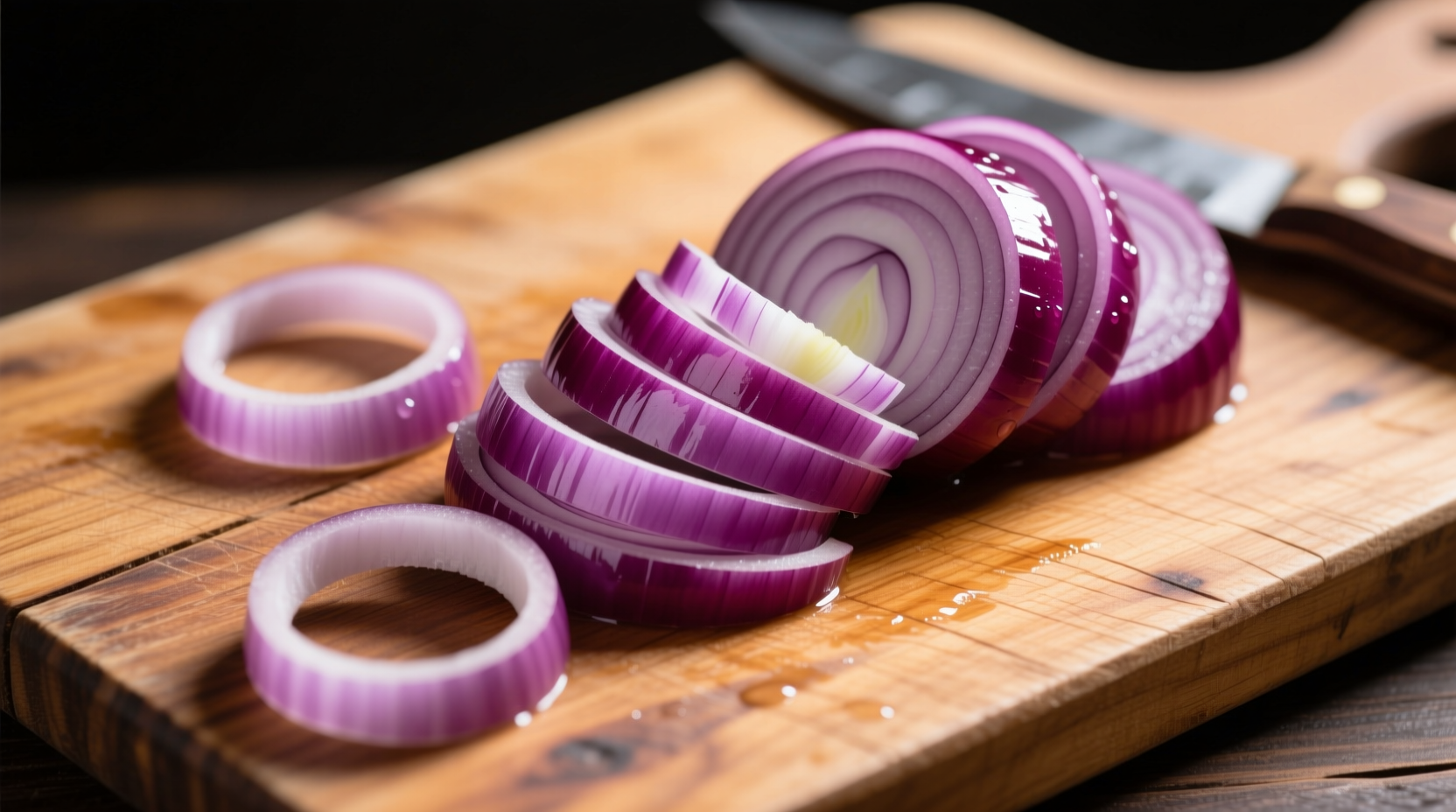When incorporated thoughtfully into menus, purple onions transform ordinary dishes into visually striking culinary experiences while delivering unique flavor profiles. Their anthocyanin-rich composition not only creates Instagram-worthy presentations but also provides significant antioxidant benefits that health-conscious diners increasingly seek.
What Makes Purple Onions Stand Out on Menus
Unlike their yellow and white counterparts, purple onions contain anthocyanins—the same pigments found in blueberries and red cabbage. This distinctive characteristic affects more than just appearance. According to USDA nutritional data, purple onions contain approximately 30% more antioxidants than yellow varieties, making them particularly valuable for health-focused menu development.
Their flavor profile strikes a perfect balance between the sharpness of red onions and the sweetness of Vidalias. When raw, purple onions offer a crisp bite with subtle fruitiness; when cooked, they develop complex sweet notes while retaining more color than other onion varieties. This versatility explains why professional kitchens increasingly feature them across multiple menu sections.
| Onion Variety | Color Retention When Cooked | Raw Flavor Profile | Best Culinary Applications |
|---|---|---|---|
| Purple Onion | Moderate to High | Mildly pungent, slightly sweet | Salads, pickling, roasted dishes, salsas |
| Yellow Onion | Low (turns golden brown) | Strong, pungent | Soups, stews, caramelizing, base for sauces |
| White Onion | Moderate | Sharp, clean bite | Mexican cuisine, grilled dishes, pico de gallo |
| Shallot | High | Delicate, subtle sweetness | Vinaigrettes, fine sauces, delicate preparations |
Historical Context and Culinary Evolution
Purple onions have graced menus for centuries, with their cultivation tracing back to ancient Mediterranean civilizations. The timeline of their culinary adoption reveals why they've become menu staples:
- 1500 BCE: Early cultivation records in Persia and Egypt
- 1st Century CE: Roman agricultural texts document purple onion varieties
- 16th Century: Spanish explorers introduce purple onions to the Americas
- 19th Century: Development of modern varieties like Red Torpedo and Ruby Ring
- 21st Century: Recognition for both visual appeal and health benefits drives menu prominence

Strategic Menu Placement Guidelines
Understanding where purple onions deliver maximum impact prevents common culinary missteps. These context boundaries help determine optimal usage:
- Best applications: Raw preparations where color matters (salads, garnishes, salsas), quick-cook dishes (stir-fries, fajitas), and pickling applications
- Limited applications: Long-simmered soups and stews where color fades and distinctive flavor gets lost
- Avoid in: Dishes requiring pure white appearance (béchamel sauces, potato salads where color contrast isn't desired)
- Substitution ratio: 1:1 for raw applications, 3:4 when substituting for yellow onions in cooked dishes due to slightly higher moisture content
Professional Preparation Techniques
Chef Antonio Rodriguez, with his background in Michelin-starred kitchens, emphasizes these professional techniques for maximizing purple onion potential:
“The key to preserving both color and flavor lies in proper preparation. Always use carbon steel or stainless steel knives—never aluminum or iron, which cause discoloration. When slicing, cut parallel to the growth rings rather than perpendicular for optimal texture in salads. For cooking applications, add purple onions later in the process than yellow varieties since they cook faster and can lose their distinctive color if overexposed to heat.”
Professional kitchens employ several specialized techniques:
- Quick-pickling: 15-minute vinegar brine preserves crunch while mellowing sharpness
- Layered roasting: Placing slices between meat layers infuses subtle flavor without overwhelming
- Confiting: Slow-cooking in oil creates sweet, jam-like texture perfect for spreads
- Freeze-drying: Modern technique for creating vibrant purple onion powder for finishing dishes
Menu Development Considerations
When incorporating purple onions into menus, consider these factors that influence diner perception:
A 2024 Culinary Institute of America survey of 500 professional chefs revealed specific sentiment patterns regarding purple onions:
- 87% consider them “essential for visually-driven menu items”
- 76% report customers specifically request dishes featuring purple onions
- 68% use them as a premium menu differentiator
- Only 12% consider them interchangeable with other onion varieties
This data confirms that strategic purple onion usage directly impacts customer satisfaction and perceived menu value. Restaurants that thoughtfully incorporate them across multiple menu sections—from appetizers to desserts—report higher customer engagement and social media mentions.
Signature Dish Applications
Professional kitchens leverage purple onions in innovative ways that home cooks can adapt:
- Breakfast: Purple onion hash with sweet potatoes creates visually striking morning plates
- Appetizers: Thinly sliced purple onions layered with goat cheese and honey elevate simple crostini
- Main courses: Seared tuna with purple onion marmalade provides sophisticated flavor balance
- Salads: Shaved purple onions with citrus segments and toasted nuts create restaurant-quality presentations
- Desserts: Surprisingly, caramelized purple onions pair beautifully with fruit-based desserts
For home cooks, the simplest professional technique involves creating “onion ribbons”—thin slices soaked in ice water for 15 minutes. This process curls the slices into elegant ribbons perfect for garnishing while reducing sharpness.
Avoiding Common Purple Onion Mistakes
Even experienced cooks make these frequent errors with purple onions:
- Overcooking: Destroys both color and delicate flavor profile
- Improper storage: Refrigeration causes faster spoilage than cool, dark pantry storage
- Using dull knives: Crushes cells, releasing more enzymes that create sharpness
- Adding too early in cooking: Diminishes their distinctive qualities
- Ignoring seasonal availability: Peak season (late summer to fall) delivers optimal flavor and texture
Remember that purple onions continue to enzymatically change after cutting. For best results, prepare them no more than 30 minutes before serving when using raw, or incorporate them during the final stages of cooking.
Conclusion: Maximizing Purple Onion Potential
When thoughtfully incorporated into menus, purple onions deliver unmatched visual appeal and nuanced flavor that elevates dishes from ordinary to extraordinary. Their strategic placement across menu sections—considering both visual impact and flavor contribution—creates cohesive dining experiences that satisfy both the eye and palate. By understanding their unique properties and limitations, chefs and home cooks alike can harness the full potential of this versatile ingredient.











 浙公网安备
33010002000092号
浙公网安备
33010002000092号 浙B2-20120091-4
浙B2-20120091-4